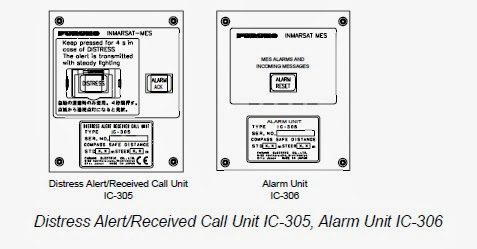+ EGC setup +
The FELCOM 15 receives EGC messages directed to its present position and
Navarea without further programming. The EGC Setup screen lets you choose
additional areas for which to receive messages and also the Navtex station and
type of message for Coastal Warning (NAVTEX Re-broadcast).
1. Press the [F8] key to display the Setup menu.
2. Press the [5] key to display the EGC Setup menu.
3. The cursor is selecting Additional Position, where you can enter the L/L
position of an ocean region you want to receive broadcasts about. Press the
[Enter] key to open the additional position entry window.
4. Enter position as follows:
a) Enter latitude (XX° XXX).
b) Press the [N] or [S] key as appropriate to enter coordinate.
c) Enter longitude (XXX° XXX).
d) Press the [E] or [W] key as appropriate enter coordinate.
5. Press the [Enter] key to close the additional position entry window.
6. Press the [↓] key to choose Navarea.
7. Press the [Enter] key to open the navarea entry window.
8. Enter additional Navarea(s) (I-XVI, up to nine) in two digits, referring to the
illustration below for code number.
9. Press the [Enter] key to close the navarea entry window.
Note: “Fixed Area” is where you enter fixed areas (max. 3) for chart
correction service. However, this service is not yet available; enter no data.
10. Press the [↓] key to choose Waypoint.
11. Press the [Enter] key to open the waypoint options window.
12. Choose ON to receive broadcasts for the area which contains the destination
waypoint set on the navigator.
13. Press the [Enter] key to close the waypoint options window.
14. Press the [↓] key to choose Station Code.
15. Press the [Enter] key to open the station code entry window.
16. Enter the navtex station code (A-Z) of the navarea,in upper case alphabet.
For details about navtex stations, consult the operator’s manual of the navtex receiver.
17. Press the [Enter] key to close the station code entry window.
18. Choose message type to receive: Use the arrow keys to choose message
type, press the [Enter] key, choose ON or OFF as appropriate, and press the [Enter] key.
Note: Navtex messages “Coastal navigational information”, “Meteorological
warning” and “Search and rescue alert” (they do not appear on the EGC Setup menu) must
always be received.
19. Press the [Esc] key to open the update window.
20. Yes is selected; press the [Enter] key to update EGC settings.
21. Press the [Esc] key to return to the standby display.
.jpg)



















